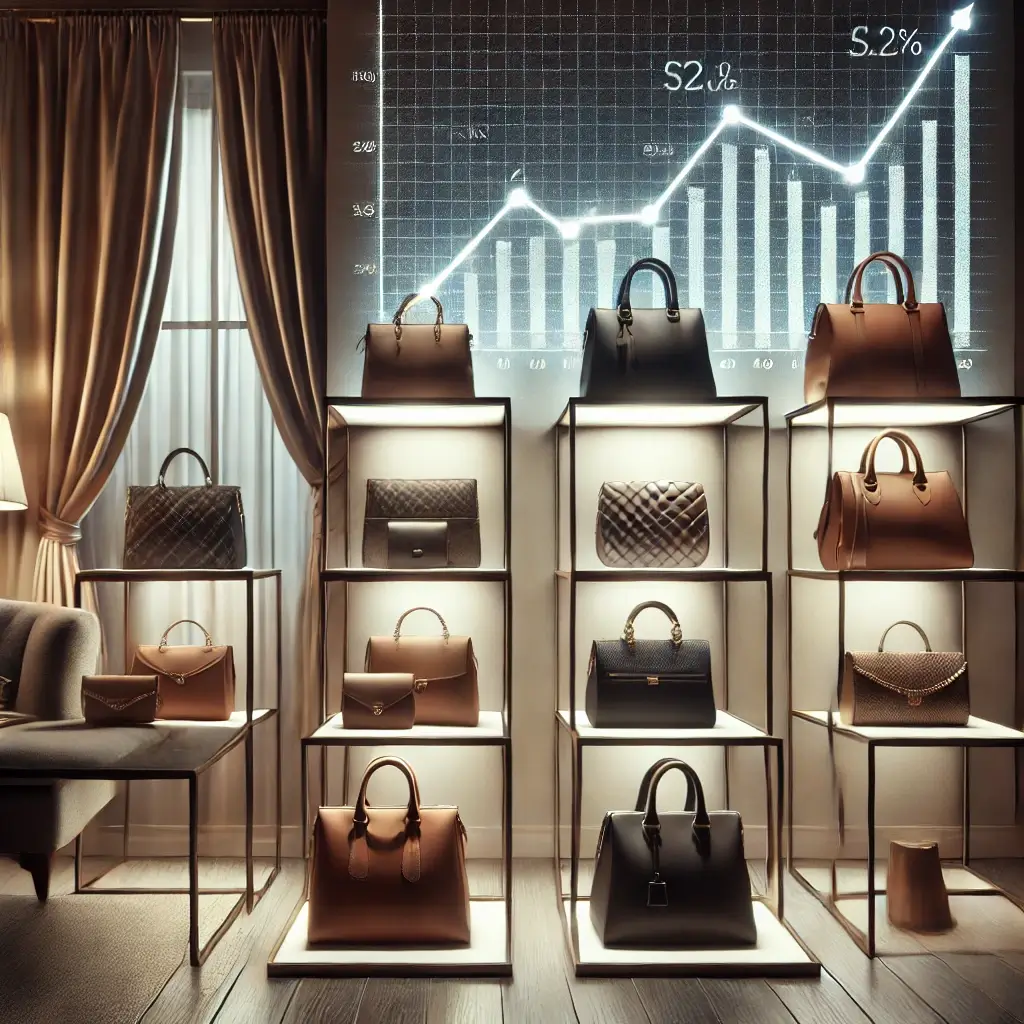The Cultural and Financial Significance of the Birkin
The Hermès Birkin bag is more than just a luxury accessory; it is a symbol of status, culture, and financial acumen. Over the years, this iconic handbag has emerged as a powerful investment asset, rivaling traditional vehicles such as stocks, bonds, and even gold. As of 2024, the Birkin’s market performance continues to capture the interest of investors and collectors alike, bolstered by shifting global trends and evolving consumer demographics. With a stronghold in established markets and growing demand in emerging economies, the Birkin’s investment trajectory reflects broader socio-economic patterns.
Consistent Value Appreciation and Market Dominance
One of the most striking aspects of the Hermès Birkin is its ability to consistently appreciate in value. Art Market Research’s 2024 Luxury Accessories Index highlights a 14.2% average annual return over the last decade, far surpassing many traditional investment instruments. The unique factors driving this performance include limited production, superior craftsmanship, and the strategic management of exclusivity by Hermès. As we explore its evolving market dynamics, the Birkin’s role as a tangible luxury asset becomes increasingly significant in today’s investment portfolios.
Emerging Markets and Consumer Demographics
The Birkin’s performance in 2024 is shaped by its penetration into emerging markets and an increasing appeal among younger, affluent consumers. The Asia-Pacific region, led by China, has seen unprecedented growth in the luxury goods market. According to Deloitte’s 2024 Luxury Goods Investment Analysis, Chinese consumers account for nearly 40% of global luxury spending, with a growing portion dedicated to collectible items such as the Birkin. Hermès has strategically capitalized on this trend by enhancing its brand presence and adapting to regional preferences without diluting its exclusivity.
Premium Variants and Auction Performance
Exotic skin variants and limited-edition colors remain the most sought-after Birkins, driving higher auction premiums and secondary market performance. Christie’s Luxury Accessories Department reports an average auction premium of 50-80% above retail, with rare editions fetching up to 200% premiums. For example, Porosus crocodile Birkins in limited-edition colors command appreciation rates of 28% annually (Christie’s Luxury Accessories Market Report 2024). This extraordinary performance underscores the importance of rarity and exclusivity in determining value.
Technology and Authentication in the Secondary Market
Emerging markets have also seen a rise in younger collectors who view the Birkin as both a fashion statement and an investment vehicle. Blockchain technology and digital authentication tools introduced in 2024 have further legitimized the secondary market, offering transparency and protection against counterfeits. Sotheby’s 2024 report on luxury handbags highlights the increased adoption of these tools, fostering greater confidence among buyers and sellers alike.
Sustainability and Ethical Production
Another key factor influencing the Birkin’s investment performance is sustainability. Modern consumers, especially Millennials and Gen Z, demand ethical production practices from luxury brands. In response, Hermès has integrated sustainable practices without compromising its commitment to quality and craftsmanship. For example, the company’s investment in regenerative leather sourcing and efforts to minimize waste align with broader trends toward eco-conscious luxury (Sotheby’s Luxury Handbag Market Review 2024). These initiatives not only enhance the brand’s reputation but also ensure the Birkin’s continued relevance in a socially conscious market.
Exclusivity Strategy and Market Access
The primary market for Birkins remains tightly controlled, with access limited to loyal Hermès customers who meet stringent purchase history and relationship-building requirements. This exclusivity creates a halo effect, driving demand in the secondary market. Knight Frank’s Luxury Investment Index 2024 notes that this controlled scarcity has been instrumental in sustaining high resale values. Regional price variations also play a role, with significant differences observed between markets such as Europe, Asia, and North America. Savvy investors often capitalize on these discrepancies by sourcing Birkins in lower-priced regions for resale in high-demand areas.
Investment Strategies and Portfolio Diversification
For portfolio diversification, experts recommend focusing on classic designs and exotic variants. Traditional leather models such as Togo and Clemence remain staples for conservative investors, while risk-tolerant buyers might explore limited editions and special-order combinations. Regardless of strategy, thorough documentation and professional authentication are critical to maximizing value and minimizing risks.
Evolution and Future Outlook
As a luxury investment asset, the Hermès Birkin continues to evolve in response to global trends and consumer demands. Its enduring appeal lies in a blend of financial performance, cultural cachet, and craftsmanship. In 2024, emerging markets and sustainability initiatives have added new dimensions to its market dynamics, ensuring its relevance in an ever-changing economic landscape. For investors, the Birkin offers a unique opportunity to blend aesthetics with financial returns, making it a cornerstone of modern luxury portfolios.
Research Sources
References
Art Market Research Luxury Accessories Index 2024
Morgan Stanley Luxury Goods Analysis 2024
Christie’s Luxury Accessories Market Report 2024
Deloitte Luxury Goods Investment Analysis 2024
Knight Frank Luxury Investment Index 2024
Sotheby’s Luxury Handbag Market Review 2024
The RealReal Resale Report 2024

